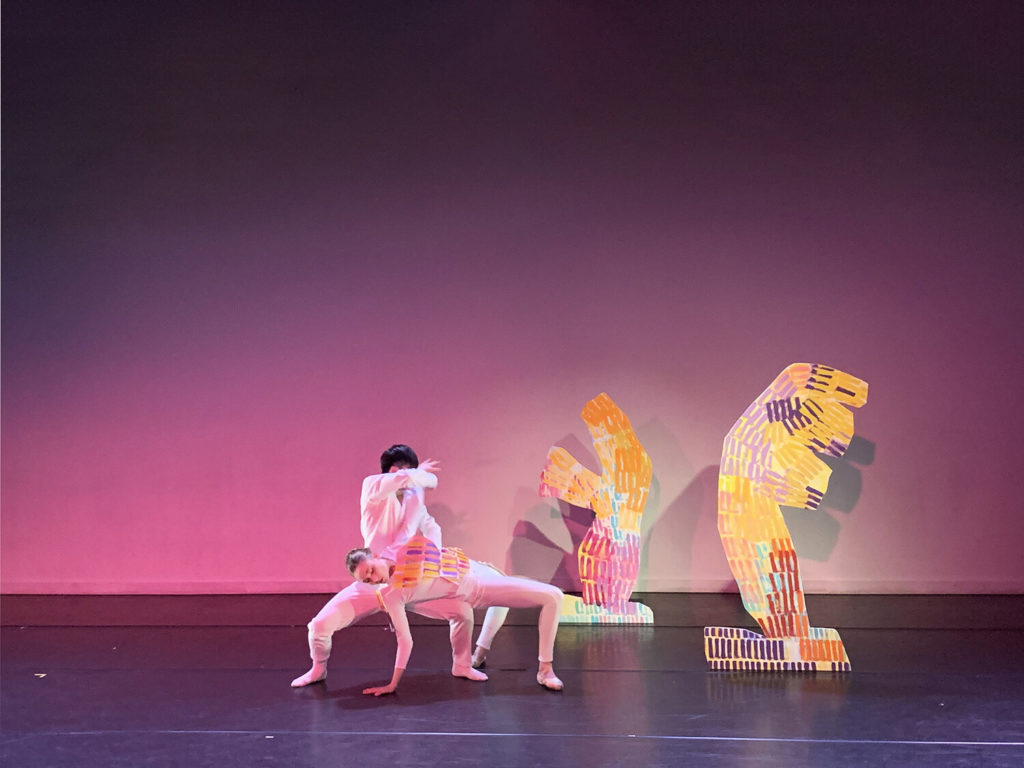Five Questions for Artist Justine Hill
Other People’s Words:
“Hill exhibits an easy-seeming confidence, both in her exuberant facture and in her engagement with art history. Her work evokes that of Pierre Bonnard, Elizabeth Murray, Frank Stella, Pablo Picasso, Brice Marden, and various other predecessors, but manages to be wholly its own thing.”
Five Questions:
Interviews in Excellence with Artist
Justine Hill

1. How do you get in the right mindset to make your work? Do you have a particular strategy?
This is something I think about often. We do everything in our lives so quickly. And I am definitely a person who schedules their entire week based on efficiency. But I am also aware that the entire concept of efficiency has little place in the studio. The studio is a place where time moves differently. And that is one of those things that still separates art from all the other visually consumed parts of our life. So unfortunately, I have no advice or strategy, I just have to have the patience to ‘waste time’ and allow myself to slow down to match the rhythm of the studio.
I do tend to make a lot of studio “to do” lists which help calm me down and make me believe I’m on schedule…but I rarely follow them once I start working.
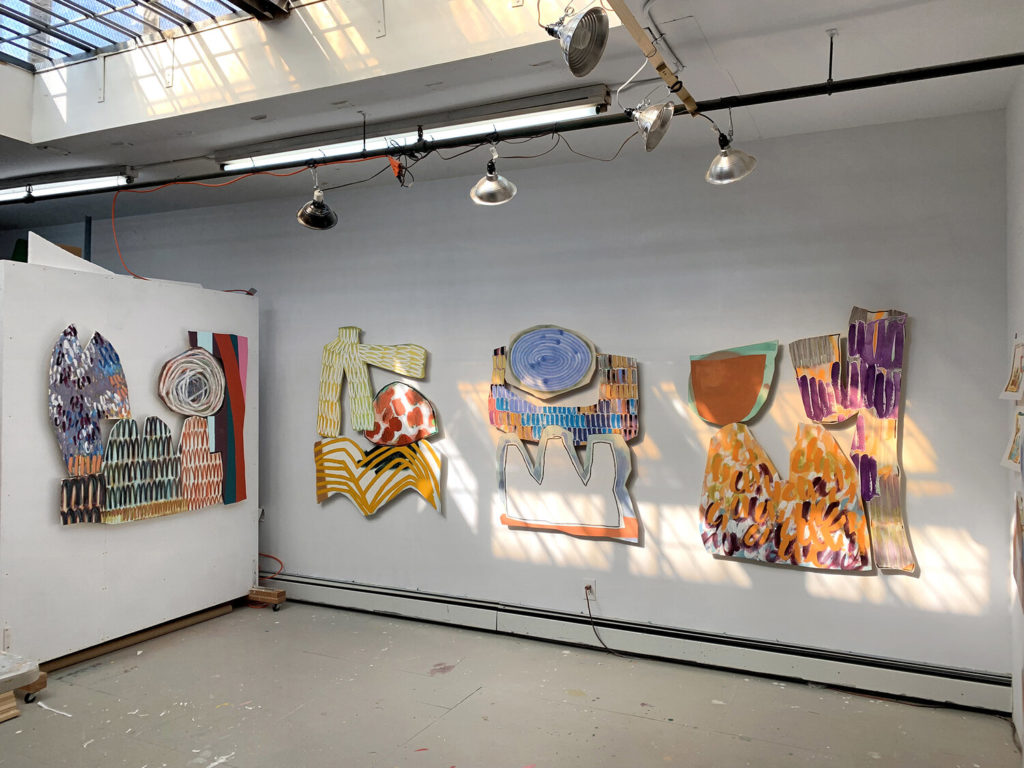
2. If you could time travel to any period in history, past or future, what would it be? Why?
I may be cheating the question, but I don’t think I would choose to go to one specific time, I think I’d prefer to go back and meet all of my artistic role models when they were starting out. I’d like to meet them when they were, like me, in their early thirties. I’d like to meet them when they were still figuring out how art fit into their life and their artistic practice. I’d like to meet them before the history books decided they were someone worth knowing. I’d like to meet them as a peer and not as an idol.
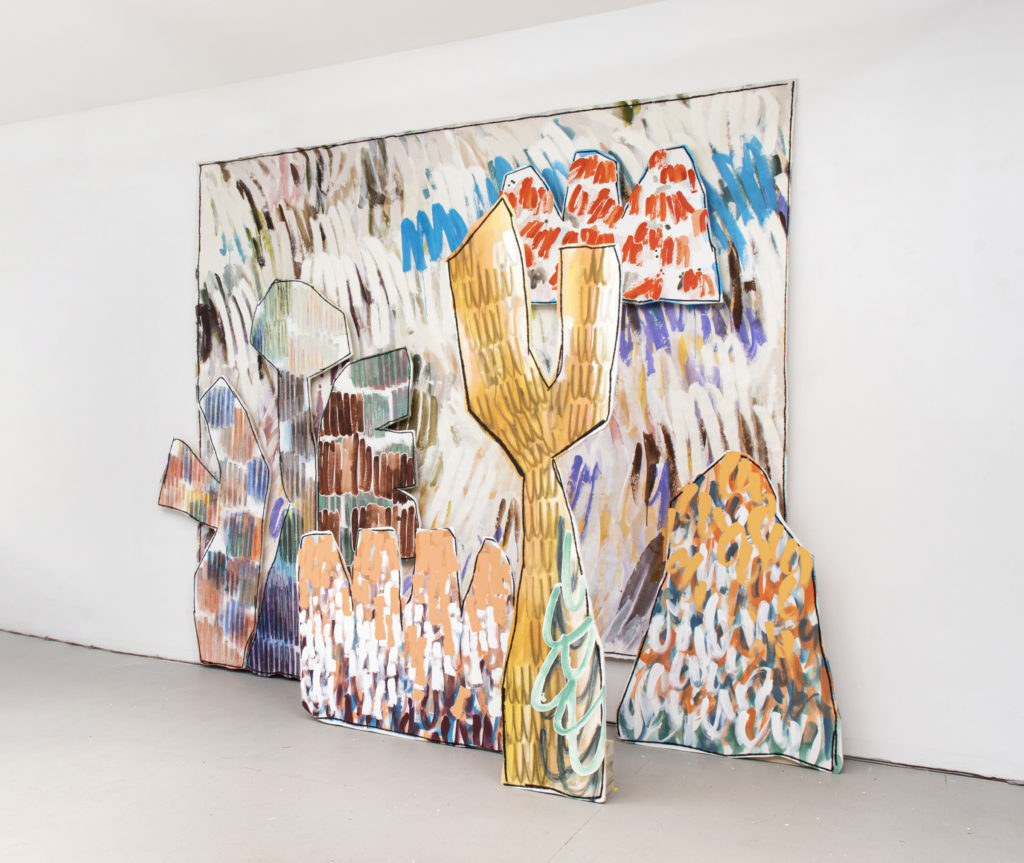
3. What process do you go through in preparing for a work that you are about to make? (drawing, sketching, writing, experimenting, etc…)?
My practice is basically a back and forth of planning-working-planning-working. For the past few years my work has been all about shaped canvases. So, I always come up with the shape first. I can spend anywhere from a couple weeks to a few months sketching a new shape. Once I decide on a shape—which includes not only the composition and number of panels, but also the size—I then build it. After it’s built, I then start another round of sketching this time I sketch what goes in the painting not just the outside edge of the painting. And only after most of the main painting decisions have been made such as: colors, materials, paint thickness, and mark-making do I actually start painting on the shape.
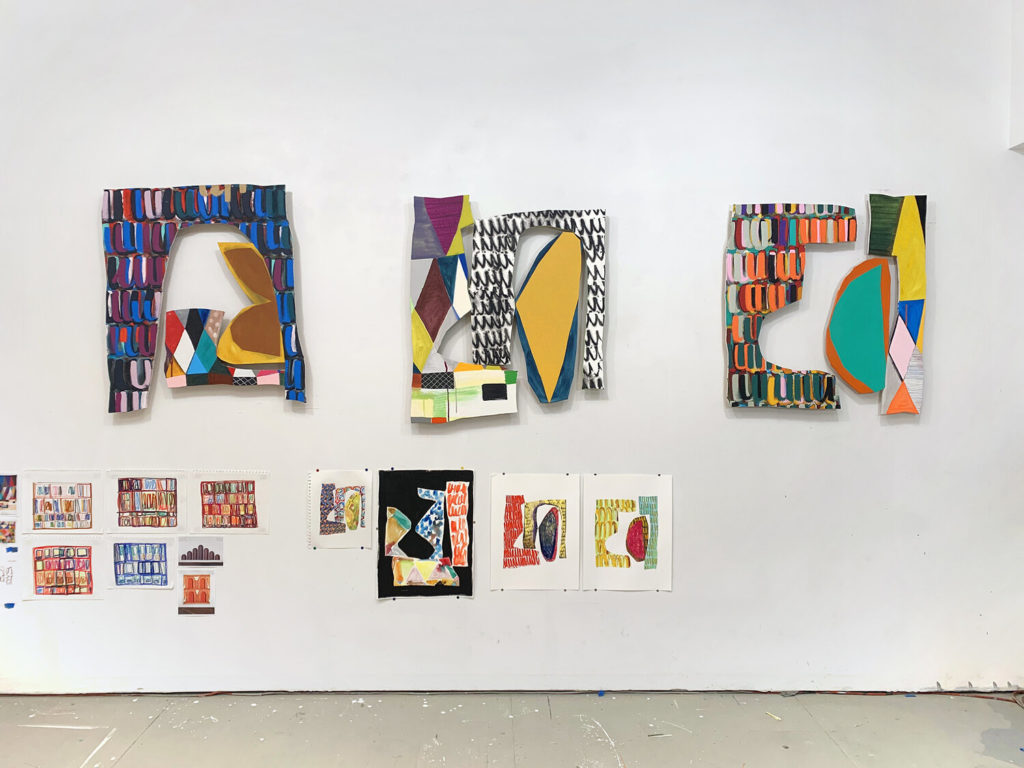
4. How did you arrive at your current art practice? Was there a pivotal moment that got you there?
I feel the need to start by saying I don’t believe a single moment can put you anywhere. However, I do often talk about the importance of a painting I made in January of 2015 (There’s More Than One of Everything II) where I stacked six rectangles together to create a new shape. It was not the first time I had done this, but it was the first time I accepted I didn’t have to start with a rectangle and put shapes into it—I could instead start with a specific shape. That beginning shift definitely changed my work moving forward. I started building shapes out of plywood that March.
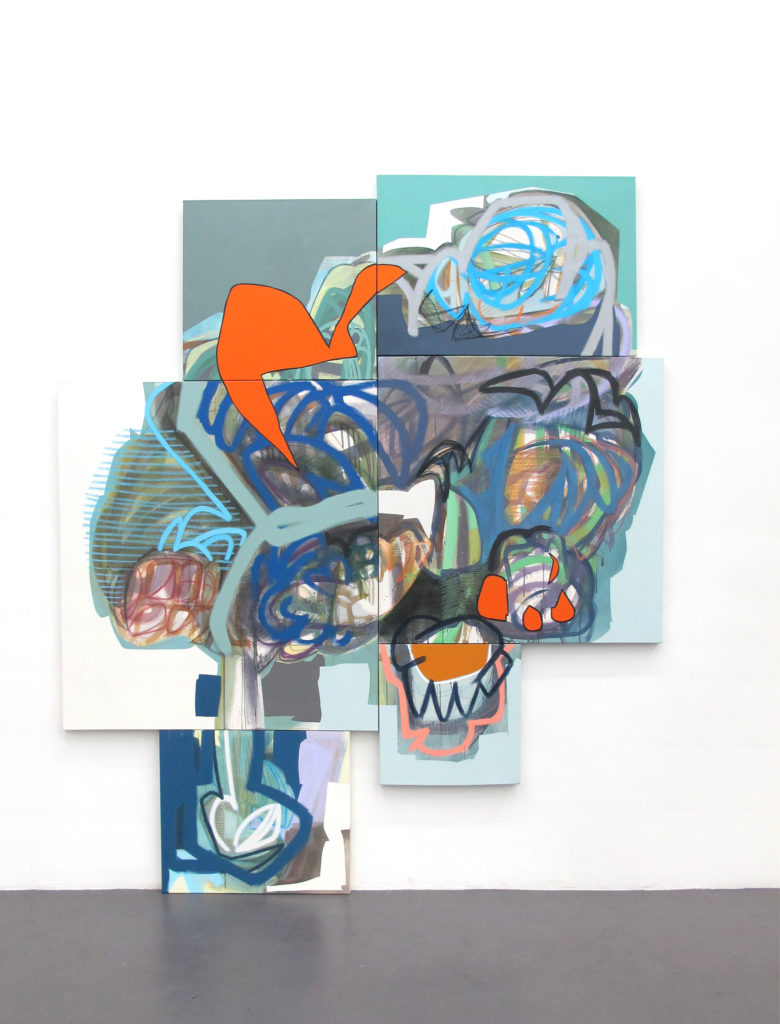
5. What does an ideal studio day look like for you?
The ideal studio day is very simple, it’s when it’s the only thing I have to do that day. When I have no appointments, no studio visits, no dinner plans or openings or any sort of social obligation I have to go to that evening. It is a day I never have to look at a clock because there is nothing I can be late for.
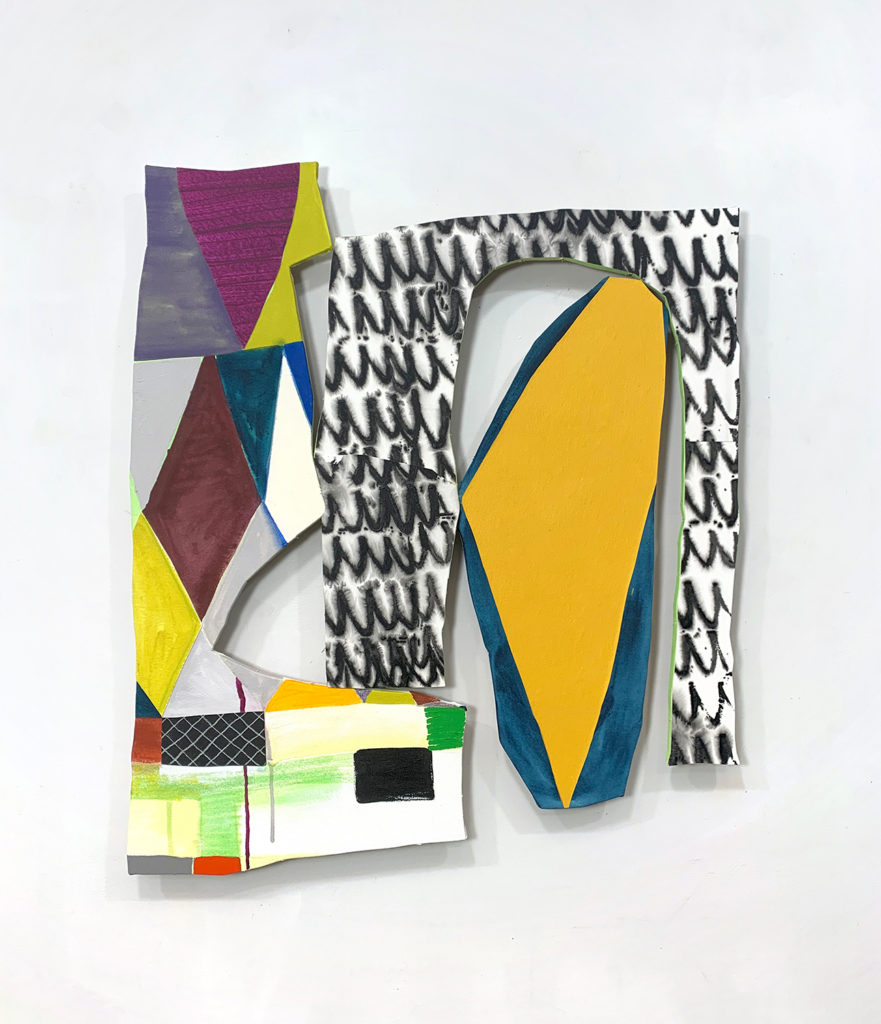
6. Do you collaborate with other artists often? If so, how do you go about doing this?
I definitely have to say no, I don’t collaborate often. But I did work on a very exciting project this past year with the amazing choreographer—Michelle Thompson Ulerich. We were selected to work together on this project by Norte Maar, so when Michelle and I first met we didn’t know each other so we had to verbally explain what was important about our individual practices. I try whenever possible to shy away from explaining my work in words but working with Michelle whose body-oriented-time-based and live-performed work is so far outside of my comfort zone it reminded me that words are sometimes the most common language. Our end result was a 7-minute ballet duet performed at the Actors Fund Arts Center in Brooklyn. What seemed to help the whole process, and proved most beneficial, was clarifying for myself which elements of my practice are essential and which I which I could be flexible on.
(Norte Maar annually organizes Counterpointe, a collaboration between seven female dance makers and seven female visual artists. The performances take place each year at the downtown Brooklyn’s Actors Fund Arts Center. Counterpointe8 will take place February 28, 29, March 1, 2020 if you are interested.)
